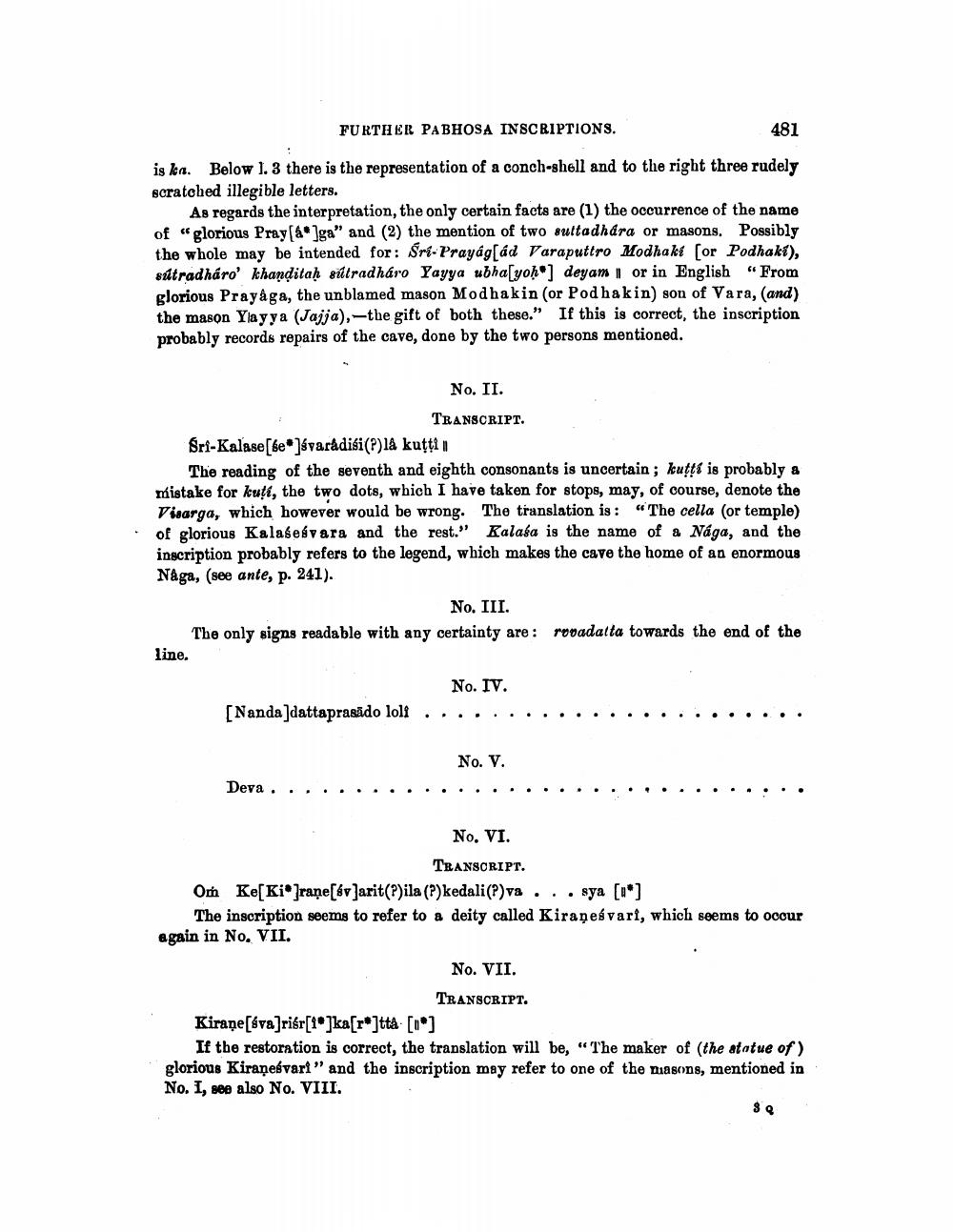________________
FURTHER PABHOSA INSCRIPTIONS.
481
is ka. Below 1. 3 there is the representation of a conch-shell and to the right three rudely scratched illegible letters.
As regards the interpretation, the only certain facts are (1) the occurrence of the name of "glorious Pray[á]ga" and (2) the mention of two suttadhára or masons. Possibly the whole may be intended for: Sri-Prayág[ád Varaputtro Modhaki [or Podhaki), sútradháro' khanditaḥ sútradháro Yayya ubha[yoḥ] deyam or in English "From glorious Prayaga, the unblamed mason Modhakin (or Podhakin) son of Vara, (and) the mason Yayya (Jajja), -the gift of both these." If this is correct, the inscription probably records repairs of the cave, done by the two persons mentioned.
Sri-Kalase[bevaradisi(P)14 kuttia
The reading of the seventh and eighth consonants is uncertain; kuṭṭt is probably a mistake for kuți, the two dots, which I have taken for stops, may, of course, denote the Visarga, which however would be wrong. The translation is: "The cella (or temple) of glorious Kalaseśvara and the rest." Kalasa is the name of a Nága, and the inscription probably refers to the legend, which makes the cave the home of an enormous Nags, (see ante, p. 241).
No. II.
TRANSCRIPT.
No. III.
The only signs readable with any certainty are: revadatta towards the end of the line.
.....
[NandaJdattaprasido lolt
Deva.
No. IV.
No. V.
No. VI. TRANSCRIPT.
Oh Ke[Kiran[év Jarit(?)ila (?) kedali(?) va
sya [*]
The inscription seems to refer to a deity called Kiranesvarf, which seems to occur again in No. VII.
No. VII.
TRANSCRIPT.
Kirape[éva]riér[1]ka[r*]tta [*]
If the restoration is correct, the translation will be, "The maker of (the statue of) glorious Kiranesvart" and the inscription may refer to one of the masons, mentioned in No. I, see also No. VIII.
3 Q




